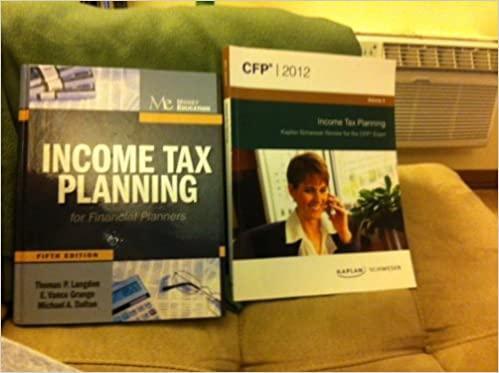Question
Obtain Walmart's financial statements for the fiscal year ending January 2018, 2019, and 2020 from SEC.gov and do the following: (1) compute the value of
Obtain Walmart's financial statements for the fiscal year ending January 2018, 2019, and 2020 from SEC.gov and do the following: (1) compute the value of the ratios listed below for three years- show all computations. (2 ) interpret the changes in Walmart risk ratios during the three- year period indicating any areas of concern.
Current Ratio: Quick Ratio Operating Cash Flow to Current Liabilities Ratio: Days Accounts Receivable outstanding Days Inventory held Days Accounts Payable outstanding Net Days Working Capital financing needed Liabilities to Assets Ratio Liabilities to Shareholders' Equity Ratio: Long-Term Debt to Long-Term Capital Ratio Long-Term Debt to Shareholders' Equity Ratio Interest Coverage Ratio Operating Cash Flow to Total Liabilities Ratio Altman's Z-score Probability of bankruptcy
Integrative Case 5.1: Walmart a. Current Ratio: $60,239/$64,619 = 0.93 Quick Ratio: ($8,705 + $5,624)/$64,619 = 0.22 Operating Cash Flow to Current Liabilities Ratio: $27,389/0.5($64,619 + $65,253) = 0.42 Days Accounts Receivable: 365/[($482,130)/0.5($5,624 + $6,778)] = 4.69 days Days Inventory: 365/[($360,984/0.5($44,469 + $45,141)] = 45.3 days Days Accounts Payable: 365/($360,984 + $44,469 $45,141)/[0.5($38,487 + $38,410)] = 38.95 days Net Days Working Capital: 4.69 + 45.3 38.95 = 11.05 days Liabilities to Assets Ratio: ($64,619 + $38,214 + $5,816+$7,321)/$199,581 = 0.58 Liabilities to Shareholders Equity Ratio: ($64,619 + $38,214+$5,816 + $7,321)/$80,546 = 1.44 Long-Term Debt to Long-Term Capital Ratio: $38,214/($38,214 + $80,546) = 0.32 Long-Term Debt to Shareholders Equity Ratio: $38,214/$80,546 = 0.47 Interest Coverage Ratio: ($14,694+$386+$6,558+$2,467)/$2,467 = 9.77 Operating Cash Flow to Total Liabilities Ratio: $27,389/[0.5($64,619 + $38,214 + $5,816 + $7,321 + $65,253+$40,889 + $2,606 + $8,805)] = 0.23
Altmans Z-Score Working Capital/Assets: 1.2[($60,239 $64,619)/$199,581] ................... (0.0263) Retained Earnings/Assets: 1.4($90,021/$199,581) .................................... 0.6315 Earnings before Interest and Taxes/Assets: 3.3[($15,080 + $6,558 + $2,467)/$199,581].......................................... 0.3986 Market Value Equity to Book Value of Liabilities: 0.6[(3,162 $66.36)/($64,619 + $38,214 + $5,816 + $7,321)] ............ 1.0856 Sales/Assets: 1.0($482,130/$199,581) ....................................................... 2.4157 Z- Score................................................................................................... 4.5050 Probability of Bankruptcy .......................................................................... 0.0% a. Short-Term Liquidity Risk: Walmart shows limited persistent changes in its short- term liquidity. Its current ratio grew from 0.88 in 2013 to 0.97 in 2014, then back to 0.90 in 2015. The quick ratio shows a similar pattern from 0.20 to 0.22. Operating cash flow to current liabilities has grown from 0.33 in 2013 to 0.42 in both 2014 and 2015, consistent with a strengthening cash flow profile relative to current liabilities. The days accounts receivable outstanding and days inventory on hand have both held steady at approximately 5 and 45 days, respectively, across all years. Similarly, days accounts payable outstanding has also remained steady, between 38 and 39 days. Together, these working capital accounts indicate 1112 days financing required across all years. Overall, Walmart seems subject to very low short-term liquidity risk. Long-Term Solvency Risk: Walmarts total liabilities and liabilities ratios have decreased during the last three years. Likewise, long-term debt ratios have also de- creased. Both show a small but marked decline in the level of liability financing in the capital structure. However, the interest coverage ratio is high, although it has steadily decreased from above 12 in 2013 to below 10 in 2015. Overall, Walmart does not display much long-term solvency risk. Bankruptcy Risk: Altmans Z-score model shows virtually no probability of bankruptcy, and the Z-score has remained steady across the three years. No indi- vidual components of the Z-score stand out as contributing much variation in the overall bankruptcy risk according to the model. Overall, and not surprising, Walmart faces essentially no bankruptcy risk.
Step by Step Solution
There are 3 Steps involved in it
Step: 1

Get Instant Access to Expert-Tailored Solutions
See step-by-step solutions with expert insights and AI powered tools for academic success
Step: 2

Step: 3

Ace Your Homework with AI
Get the answers you need in no time with our AI-driven, step-by-step assistance
Get Started


